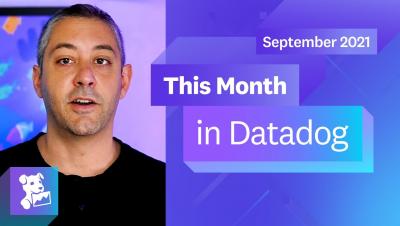Operations | Monitoring | ITSM | DevOps | Cloud
Datadog
Best practices for writing incident postmortems
After you have stopped an incident from affecting your customers, you need a more thorough investigation in order to prevent similar incidents in the future. Postmortems record the root causes of an incident and provide insights for making your systems more resilient. At the same time, postmortems can be difficult to produce, since they require deeper analysis and coordination between teammates who are busy with the next development cycle.
Compare and optimize your code with Datadog Profile Comparison
Code profilers offer detailed insight into the efficiency of application code by measuring things like the execution time and resource utilization of a service. Datadog’s always-on, low overhead Continuous Profiler provides snapshots of code performance for a service that are tagged with key metadata (e.g., region, service, release), so you can easily identify and optimize inefficient code.
Datadog on Gamedays
Best practices for getting started with Datadog Network Performance Monitoring
Whether running on a fully cloud-hosted environment, on-premise servers, or a hybrid solution, modern services and applications are heavily reliant on network and DNS performance. This makes comprehensive visibility into your network a key part of monitoring application health and performance. But as your applications grow in scale and complexity, gaining this visibility is challenging.
Monitor your Netlify sites with Datadog
Netlify is a Jamstack web development platform that lets customers build and deploy dynamic, highly performant web apps. By uniting popular JavaScript frameworks, developer tools, and APIs into streamlined workflows, Netlify helps teams rapidly spin up and ship common Jamstack use cases, including e-commerce stores, SaaS applications, and corporate sites. Netlify supports these deployments with an integrated CI/CD tool, global multi-cloud edge network, and serverless backend.
Announcing support for EKS Anywhere
Amazon Elastic Kubernetes Service (EKS) is a cloud-based compute platform that includes a fully managed Kubernetes control plane in order to simplify cluster operations. AWS introduced EKS Anywhere to bring the operational ease of EKS to organizations that manage on-premise environments (e.g., to meet data sovereignty requirements).
Monitor feature releases with Statsig's offering in the Datadog Marketplace
Statsig is a modern experimentation platform that provides crucial insight into how new features are received by your users, so you can make informed product decisions and deploy with confidence. Statsig automatically runs A/B tests on features as they’re rolled out, and measures their impact on key business metrics, such as user growth and engagement.
Deploy ASP.NET Core applications to Azure App Service
The ASP.NET Core framework provides cross-platform support for web development, giving you greater control over how you build and deploy your.NET applications. With the ability to run.NET applications on more platforms, you need to ensure that you have visibility into application performance, regardless of where your applications are hosted. In previous posts, we looked at instrumenting and monitoring a.NET application deployed via Docker and AWS Fargate.











